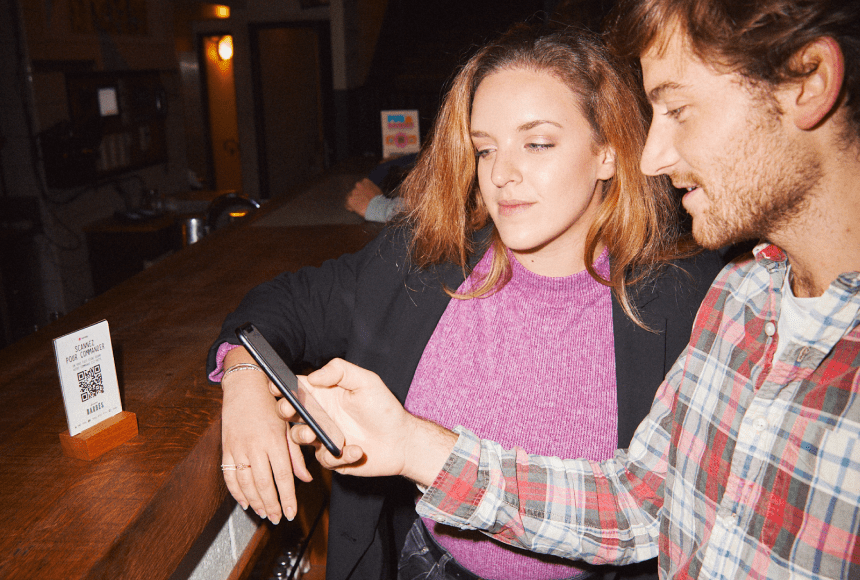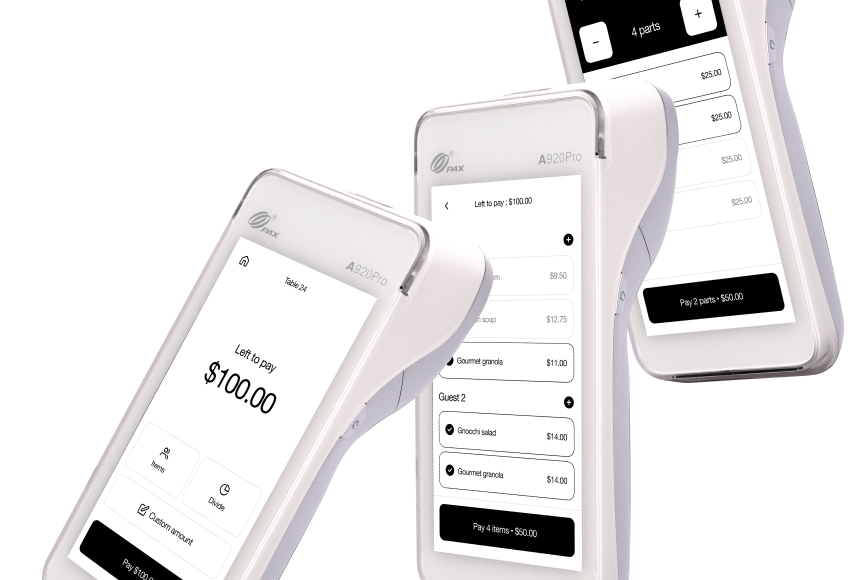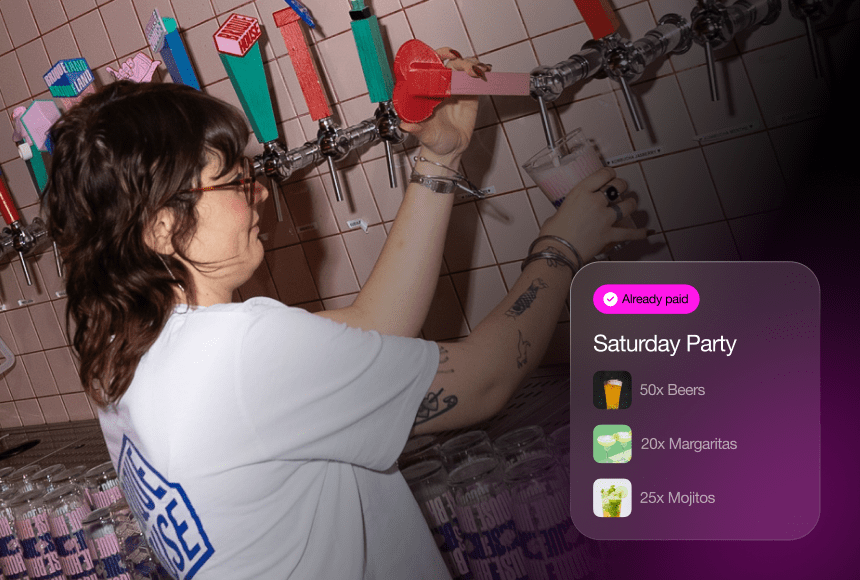
Simple Steps for a Smooth Transition to QR Code Ordering
Why QR Code Ordering Is No Longer Optional
Picture this: a busy Saturday evening at your restaurant. Tables are filled, your servers are juggling multiple orders, and new guests are waiting to be seated. Suddenly, a party of four requests the check at the same time two neighboring tables want to place additional orders. Sound familiar? Enter QR code ordering—a modern solution that streamlines the flow for both guests and staff.
Many diners now expect quick, contactless ways to view menus, place orders, and pay. According to the National Restaurant Association (How Tech is Changing the Restaurant Industry), a growing percentage of restaurants are integrating digital ordering tools to keep pace with customer expectations. QR codes have emerged as one of the most convenient ways to handle this.
But how do you make it work with your current point-of-sale (POS), staff routines, and back-of-house operations? In this article, we’ll break down the steps that can help you incorporate QR code ordering into your existing system—without turning everything upside down.
1. Start by Identifying Your Restaurant’s Key Needs
Before you scan the market for new tech, pinpoint what problem you want QR codes to solve. Are your servers spread thin during rush hours? Do your customers frequently ask for contactless menus or quick payment? Maybe you’re seeing inefficiencies in transferring orders from the front-of-house to the kitchen.
Clarifying these pain points guides you in selecting the right QR solution. Here’s how to start:
- Check Your Current Setup: Understand your POS system’s capabilities and limitations. Do you have a digital menu in place already? Can your POS handle custom orders easily?
- Talk to Your Staff: The best tech solutions fail when staff don’t see the value or find them overly complicated. Ask your servers which tasks eat up their time.
- Listen to Customers: Read online reviews and talk to regulars. Do they mention slow service, confusion with checks, or long waits for menus? Their feedback gives you real-world clues.
This reflection helps you define your goals. Maybe you want to reduce server trips to tables by 20%. Or perhaps you aim for a faster payment process. Keep these targets in mind as you move forward.
2. Choose a QR Code Partner That Syncs with Your POS
Next, you’ll look for a technology solution that can integrate smoothly with your existing system. Ideally, you won’t have to rip out your POS and start from scratch. Instead, aim for something that complements what you already have.
Some key considerations include:
- Compatibility with Your POS: Not all QR systems work seamlessly with every POS. Confirm with vendors which POS platforms they support. You want orders placed via QR code to go directly into your existing system, avoiding double entry.
- Ease of Setup: Some solutions offer a quick-start method: you create an account, upload your menu, generate a code, and you’re good to go. Others require deeper integration or specialized hardware. Decide how much time (and budget) you can invest.
- Menu Management Tools: If you plan frequent specials or daily menu updates, look for a platform that lets you change items in real-time. This is crucial if you run short on a certain ingredient and need to remove a dish.
By aligning the QR solution with your POS on the front end, you ensure that each order flows seamlessly to your kitchen printer or display system. That eliminates manual transcribing—a huge time-saver and error-reducer.
3. Keep the Customer Experience Front and Center
Yes, you’ll benefit from fewer manual steps and improved table turnover. But your ultimate aim is to enhance the diner’s journey. If your new QR code system feels confusing or impersonal, your customers might recoil from it.
Here’s how to make QR code ordering a delight:
- Prominent Placement: Ensure the codes are easily visible on each table or tabletop display. No one wants to hunt under the salt shaker to find it.
- Clear Instructions: A short line of text can do wonders: “Scan to browse the menu and order.” That’s it. Keep it friendly, confident, and approachable.
- Personalized Layout: If possible, include appealing food photos, short descriptions, and user-friendly categories. Consider a step-by-step approach: “Choose your appetizer,” then “Pick your main course.” It minimizes confusion.
When diners see exactly how it works—down to how to pay using the same QR code or an integrated tool like sunday—they’ll quickly adapt. Show them that it’s not replacing your hospitality but enhancing it.
4. Offer a Safety Net for Guests Who Prefer Traditional Service
While QR codes are a game-changer for many, some guests prefer a more hands-on approach from servers or simply aren’t comfortable with phone-based ordering. Don’t alienate them. Instead, provide:
- Physical Menus on Hand: Keep a small stack of menus for those who request them. Let your servers know how to elegantly offer an alternative without undermining the new system.
- Quick Staff Training: If a guest seems hesitant with the code, your server can politely step in and walk them through the scanning process. A 30-second tutorial can be all the nudge they need.
- Printed “How-To” Cards: A tiny card can outline the basics: “Open your camera, point at the code, tap the link.” This helps first-timers get on board without embarrassment.
By offering both digital and traditional routes, you respect individual preferences. Over time, many holdouts might even switch to QR codes once they see how easy it is.
5. Integrate Tipping, Payment, and Feedback in One Flow
A major plus of QR code ordering is that it can unify the entire dining sequence—from scanning the menu to paying the tab, and even leaving a tip or review. Tools like sunday illustrate how a single QR code can handle everything. Why does this matter?
- Less Server Stress: Servers aren’t running around dropping checks, picking up credit cards, and printing more receipts. Diners control when and how they pay, reducing friction and wait times.
- Higher Tip Averages: Digital payment flows often present tipping suggestions (like 15%, 20%, or 25%) in a user-friendly way. Guests are more likely to pick a generous option when it’s clearly presented.
- More Feedback Opportunities: Once payment is made, a short prompt—“Rate your experience!”—can capture reviews or quick ratings. This helps you gather real-time insights while they’re still fresh in the customer’s mind.
If your existing POS already integrates with certain payment solutions, check if a QR-based ordering option also aligns with that gateway. The more consolidated your tech, the simpler your day-to-day operations become.
6. Train Your Staff for a Smooth Rollout
A shiny new tech solution might look impressive, but it’s only as good as the people behind it. To ensure a seamless transition, invest time in training your team. Here’s what to focus on:
- System Basics: Show servers and hosts how the QR code links to the digital menu, and how to manage orders that come through. They should know exactly which screen to check for new orders.
- Troubleshooting Tips: Train your staff on quick fixes—like what to do if someone’s phone camera can’t scan the code, or if an item is out of stock.
- Reassuring Guests: Equip servers with a short script: “Feel free to scan our code to browse today’s specials! But if you’d prefer a handheld menu, I’m happy to bring one.” The goal is to present it as a perk, not an ultimatum.
Regularly gather staff feedback on what’s working and what’s not. They’re on the front lines and can offer valuable perspectives for refining your approach.
7. Test, Monitor, and Adjust
Once you implement QR code ordering, pay close attention to how it’s performing. Don’t set it and forget it. Watch for:
- Order Accuracy: Are customers receiving exactly what they tapped on? If mistakes happen, look at whether items are mislabeled in the system or if the kitchen display is confusing.
- Customer Adoption Rate: Notice how many tables choose QR code ordering vs. calling over a server. If usage is low, figure out why. Maybe guests need better instructions, or maybe your promotional signage is lacking.
- Speed of Service: Compare how quickly orders move to the kitchen now versus before. If productivity doesn’t improve, investigate bottlenecks. Possibly staff need more training, or your menu layout is too complex digitally.
Use this data-driven approach to refine your process. In time, you’ll likely see patterns in which menu items are most popular through QR code ordering, or how table turnover times shift during peak hours.
8. Communicate Your New Setup to Customers
Don’t forget the marketing side of adopting QR codes. You want your diners—and future diners—to know about the new convenience you’re offering.
- Update Your Website: Add a blurb that says, “Enjoy contactless QR ordering right at your table! No download needed.” It signals modernity and customer care.
- Highlight It on Social Media: Share a quick snapshot or short video of how it works. Invite your followers to try it out next time they visit.
- Encourage Feedback: Some customers might be thrilled; others might have questions. Invite them to share their thoughts so you can continually refine and make improvements.
By actively promoting your QR solution, you create excitement and help guests feel more comfortable using it. This also sets you apart from competitors who haven’t embraced similar technology yet.
9. Don’t Forget Backend Coordination
While the front-of-house aspect is critical, smooth operations behind the scenes are just as important. If you’re introducing a new ordering channel, your kitchen staff should be looped in as well.
- Kitchen Display Adjustments: Does your existing KDS (Kitchen Display System) handle orders differently when they come from a QR code? Do you need color codes or labels to distinguish them from server-entered items?
- Inventory Updates: Real-time inventory is a big deal if you want to prevent overselling an item. Check if your QR system updates stock levels automatically or if a manual step is required.
- Communication Routines: Make sure managers and the kitchen know how to handle special requests or allergy notes that come through the digital system. Everyone should be on the same page about how these requests appear on the order tickets.
This backend orchestration keeps confusion at bay and fosters team confidence in the new system.
10. Stay Flexible as You Grow
Implementing QR code ordering doesn’t have to be an all-or-nothing leap. Many restaurants start with a pilot period, test it on a portion of tables, or offer it during specific times. That’s perfectly fine.
Here’s how to stay adaptive:
- Gradual Rollout: Deploy QR codes in one section to gauge staff and guest reactions. If it’s a hit, expand to the whole dining area.
- Regular Updates: Keep an eye on new software features or upgrades from your QR code provider. As you grow or your menu evolves, your digital system should keep pace.
- Collect Ongoing Feedback: Encourage staff to share daily experiences. Are guests adopting QR codes more readily at lunch or dinner? Do certain demographics show a preference? Use these insights to fine-tune marketing and design improvements.
Staying open to adjustments ensures you get the most out of your investment. Over time, you’ll likely refine aspects of the layout, tweak how you phrase instructions, or discover new ways to tie in loyalty rewards or promotional offers.
Why This Upgrade Matters
Ultimately, integrating QR code ordering is about strengthening your restaurant’s efficiency and making life easier for guests. A well-implemented QR system can boost table turnover, reduce server stress, and elevate the overall dining experience. Diners enjoy speed and control; you get more accurate orders, data insights, and an innovative edge.
There’s no single blueprint that works for every restaurant. But by following the steps outlined—defining your goals, picking the right partner, respecting guest preferences, and training your team—you set yourself up for success. Embrace small learning curves, gather insights, and fine-tune. In many cases, a couple of weeks of real-world use is all it takes for your new QR-based system to feel like it’s been part of your restaurant all along.
So, if you’ve been thinking about making the leap, don’t let the perceived complexity hold you back. With careful planning, the right tools, and a willingness to listen to your staff and customers, you’ll discover that QR code ordering can integrate smoothly into your existing setup—and might just become one of the smartest moves you make this year.
Find out more today
Drop us your details below and we’ll reach out within the next 24h



